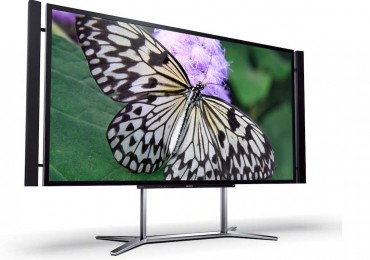Do I Need a 4K TV – Why Television Isn’t Ready for UHD
When asking the question Do I need a 4K TV, you may be interested to know that television isn’t really ready for UHD (ultra high definition) just yet. Evaluating whether or not to get excited about 4K, I can’t help but compare the movement to the push for 3-D television. The push for 3-D TV was a complete bust, being mostly forced on consumers by overzealous manufacturers wanting an excuse to encourage everyone to upgrade their televisions and Blu-ray players. The truth is, 3-D didn’t catch on for several reason, the least of which is that there wasn’t enough content available, and consumers didn’t relish the idea of paying $200 to equip their family of four with glasses whose batteries barely lasted through a few dozen movies before having to be replaced.
But I digress…
4K, or Ultra HD (UHD) is amazing. In fact, it’s “hyper-real,” meaning that it can produce images that your eye can’t even see in real-time. I remember being at a Sony booth at CEDIA (a consumer electronics trade show) last year and they were demonstrating their latest 4K television. They showed a moving picture of a window, and beyond was a grain field with stalks of wheat blowing in the wind. I could make out a great amount of detail in the stalks of wheat…and then it hit me. I would NEVER be able to see that level of detail were I actually looking out of the window at a field of wheat. The resolution of the television—and my proximity to it—were beyond reality. This certainly opens up a wide range of possibilities.
But I digress again…
The real question is: Do I need a 4K TV or UHD television now? The answer is decidedly ‘No.’ Following are some specific reasons why.
There is Absolutely No 4K Content
Technically, Sony has made available a $700 4K Ultra HD Media Player (FMP-X1) that comes with 10 4K films pre-loaded. The company has also promised a new Video Unlimited 4K Ultra HD service that will make available a bunch of 4K movies for early adopters. But that’s going to be a limited selection of films, and it’s a far cry from Netflix or VUDU rolling out a similar 4K program. And since Blu-ray discs can’t hold that much storage, nor are they spec’d to deliver 4K resolution, 4K remains a technology in search of meaningful content. We won’t even talk about HDTV broadcasting being upgraded—that’s not likely to happen for another decade if it ever happens at all.
So with a lack of real 4K content, the new 4K televisions seem a bit out of place—just like the 3D televisions were when there was no real 3D content. And, as many of the 3D services that were available (like 3D channels from ESPN, the BBC and n3D) are shutting down, consumers should definitely be wary.
Do I need a 4K TV or Are They Overkill?
I know, I know…I should be shot for suggesting that 4K is too much resolution, but the bottom line is that you probably won’t benefit from it. Not really. With projectors, the big deal was reaching that point where pixels could no longer be seen—the resolution of 1080p all but eliminated the “screen door effect” rendering you able to literally sit 8-10 feet away from a 100-inch screen and see s single image with no lines or pixels. The thing is, unless you’re planning on implementing a 200-inch screen and sitting 8 feet away from it, 4K resolution isn’t going to do much for you. And certainly on anything smaller than 60-inches it’s absolutely unnecessary. You won’t notice a difference between a high-quality 1080p monitor and a 4K TV monitor of the same size once you back up to a normal viewing distance.
Once native 4K content picks up that argument may change, but for now, we’re primarily talking about upconverted 1080p images which are really all that’s available at present. So let’s talk about that next.
4K Televisions Will Primarily Upconvert 1080p Content
Since most of what you watch is 1080p source content, a 4K television is only going to upconvert what you already have to its native resolution (3840 pixels × 2160 lines). That actually adds additional possibilities for visual errors during the conversion process. Where a 1080p display isn’t doing a ton of processing to the source image from a Blu-ray disc, your new 4K television, will have to scale 1920 x 1080 to 3840 x 2160. That’s a nice even number (it basically quadruples the display size), but it still gives tons of room for problematic visual artifacts.
Wrapping It Up with a Nice Bow
There’s another side to the ‘do I need a 4K TV’ question. 4K televisions are a big deal to manufacturers because they represent a new way to get into your pocketbooks and stir you up to buy the latest product and technology, but our recommendation is to hold off—at least for now. 4K TV is in its infancy, and when it matures we’ll be the first to encourage you to jump in with both feet. Like 3-D, we suspect that most new source components, like Blu-ray players, AV receivers and game systems will start to include 4K upconversion or outputs (some already do) but they really don’t need the added expense. After all, the 4K televisions will do the upconversion for you. And until there is a reliable, consistent, well-equipped source for 4K content, being able to pass it through your AV receiver isn’t exactly a necessity at this point.
Are you going to buy a 4K television? Let us know by dropping us a line on Facebook or commenting below and joining in the discussion.






